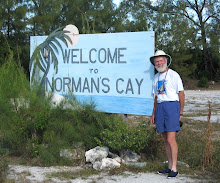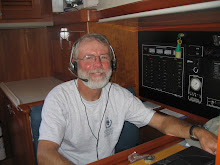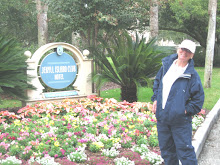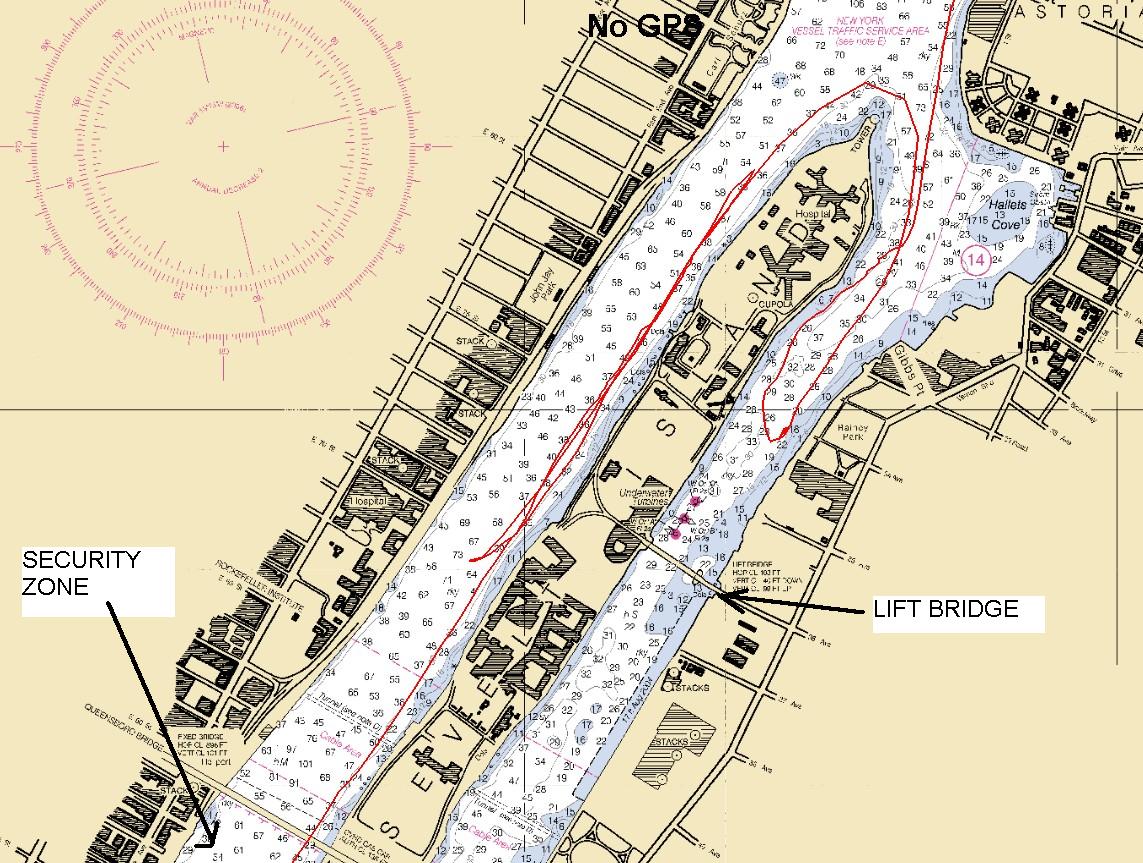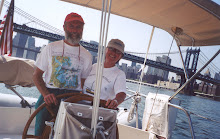Hi Everyone:
Apologies to all from Brian, who has fallen way behind on our postings, but it seems there’s not enough time to keep moving, enjoy our stops, and create a posting for the blog. Brian swears he will get caught up, but he’s definitely running out of time based on a planned arrival in Marblehead in mid to late May. His finger is completely healed so he can’t use that as an excuse anymore!
Our last posting was early March (yikes!) and we were still in George Town, hanging out with hundreds of other cruisers. After 5 months of heading generally south, it was time to start thinking about leaving the Exumas and to begin the trek north to the States! In this chapter, we will tell you about our departure from the Exumas, our adventures in Eleuthra , and our arrival in the Abacos Islands.
Farmers Cay and Lamothe the Parrot (Wed, March 5)
The George Town Cruiser’s Regatta was coming up at the end of the week, but we decided that given the weather, it would be best for us to start heading north. (Also, the Admiral was getting antsy – 10 days in one spot was enough.) Originally we had considered going to Cat Island, but again given the exposed anchorages there and in south Eleuthra, we decided to head up the Exumas to Farmers Cay.
When we arrived at Farmers Cay, we passed up the two remaining moorings (not very secure looking) and elected to anchor over in a cove off Little Farmer’s Cay, just south of the cut into Farmers. There were 3 other boats anchored there, but the skipper of Cerridwen encouraged us to approach closer to his boat to be sure we were anchored out of the current. It turned out to be a very secure and peaceful anchorage
We headed ashore, and made our way to Ocean Cabin restaurant. We were greeted by two cruisers (Nancy and Andy of “Solitaire”). Over a beer, they sang the praises of the Spiney lobster tail. We made a reservation, and told that our dinner would be ready at 6:30. We met the restaurant owner Terry Bain, and ended up buying two T-shirts. We then went off in search of “J.R.”, a local wood carver up the hill. His wood shop was in the back of his house, and he showed us around. We ended up buying a wooden Bahamian Parrot which he carved his initials in. We then walked around the island, exploring a few beaches and ended up at the local Little Harbor bar, owned by “Ali.” Ali welcomed us with some free jug wine, and told us about his various wives and children and his knack for fathering twins. We barely escaped in time for our lobster dinners, which lived up to their advance billing, accented with an excellent Bahamian sauce. The inexpensive red wine we had with our dinner (a chilled Lamothe Parrot) inspired us to name our new wooden parrot “Lamothe”. We dinghied back to our anchorage in a clear starlit night.
Farmers – Return to Warderick Wells (Thur, Mar 6)
We left Farmers around 9:00 am. With an ebbing tide, the cut entrance was quite choppy and experienced some “washing machine” wave action as we motored through. By 9:30 we were sailing in an excellent 15 knot breeze off our starboard quarter. We arrived at the Exuma Land and Sea Park (South Anchorage) in Waderick Wells around 3:00 pm and moored between two large catamarans in a strong current. Sue did an excellent job in snagging the mooring pennant in close quarters. We decided to stay aboard and rest up for the next days sail over to Eleuthra Island. Sue prepared a great pork chop dinner, and it was an early lights out.
Farewell Exumas – Hello Eleuthera (Fri, Mar 7)
The South anchorage was a bit less restful than our first time there, with lots of noise from the mooring ball hitting Sogno’s bow as the current and wind squabbled all night over which way Sogno was going to point. The racket was bad enough to drive Sue out of the rack at 5:00 am - a very unusual event! The weather reports were still good, so we began our 40 mile run over to Eleuthra Island at 8:00 am. The winds were brisk at 20 knots, so we started out with a single reef in the main and the smaller staysail. By 9:30 we had put a second reef in the main, and we were still making 6.5 to 7 knots. It was one of the best sails of the trip, with the wind off our beam and waves that were around 4 to 6 feet. Every so often a bigger wave would heel us over a bit more, but no damage other than a few books falling off their shelves, and some small spray into the cockpit.
We passed Cape Eleuthra and worked our way around Powell Point at 12:30. Then we sailed and motor sailed our way into the protection of Rock Sound. The large entrance was quite dramatic with a pretty white Anglican Church marking the settlement. We anchored north of the settlement, and dinghied over to a small dock, meeting 3 cruisers who reported on the difficulty of finding “a beer and sandwich”. Not easily deterred, we trooped into town. We came across preparations for a fundraiser for the Rock Sound Annual Homecoming celebration to be held that night at a seaside town pavillion. According to Patrick, the committee chair, every year all those who have moved from Rock Sound (mostly to Nassau) are invited back to their “family island” for a “Back to the Rock” reunion. We were informed that the beer would be cold in half an hour, so we marched inland to see Ocean Hole Park, where there was a large, deep “lake” that was actually connected to the ocean via underground passages. By the time we got back to the pavillion, we had a front row seat to watch the sun set over Exuma Sound with a couple of cold ones.
We then hiked over to Sammy’s Place restaurant for appetizers, cracked conch and fried chicken, with three “sides.” It was pretty quiet there, but things were hopping back at the pavilion and we managed to have fun dancing and letting some of the smaller kids there take pictures of everyone with our digital camera. We had a great time, but as we talked with the kids it was obvious that as cruisers, we were viewed as wealthy visitors from a different world they only saw through TV. When we were asked by one girl if we could buy her a computer, it took us aback, and reminded us that no matter how much we shared in common, the Bahamas out islands was an area where making a living was no easy task.
We walked back in the dark, but fortunately the dock was well lit, and we made it back to Sogno without any problems.
Waiting out the Cold Front Sat – Sun, Mar 8-9)
Saturday and Sunday were a mixed bag of strong winds and then periods of calm. We scrubbed our plans of going ashore both days. Listening to the weather on VHF radio, we heard that we would be switching to Daylight Savings time on Sunday. Neither of had given this a thought since last October. There were no constant reminders on TV to “spring forward” in Eleuthera. (Actually, we rarely received a signal on our little 13 inch TV.)
The spot we had anchored in turned out shallower than expected and at low tide, there was only about 1 foot of water under our keel. Luckily the coming wind shift would swing us into deeper water, but Brian tracked the changing depths to be sure the tide wouldn’t be extra low that night. The cold front eventually arrived while eating dinner on Saturday, including some brief rain, Later that night, winds howled at 20 knots. This helped wash some of the accumulated salt off Sogno. We were also overdue for showers, and cleaned up our own acts as well with some of our expensive Exuma water.
Sunday was spent relaxing and planning for our next stops along the Eleuthera coast. Brian noted that the main battery banks were not charging as well as they should. We would need to plug in at the next marina we stayed at and do an extra long “equalizer” charge to shake the battery chemistry up a bit.
We meet Sara and Monty Lewis (Mon, Mar 10)
We had an easy sail over to Governor’s Harbour. The cruising guides were pretty negative on the harbor’s holding, and it took us 3 tries before we could get the anchor set properly. We dinghied over to say hi to a nearby French sail boat, but the language barrier limited the conversation to “hello” and “bon jour.” We then stopped to say high to “Saranade” and after we found out they knew some mutual cruising friends in Marblehead, we were surprised to find out that this couple was Sara and Monty Lewis.
Sara and Monty, a “retired” couple from Maryland, are the publishers of THE paper chart and guide books that EVERYONE uses in the Bahamas (Explorer Charts). They were out gathering more data for the next update on Eleuthera and we were sort of embarrassed that we had not recognized their names immediately. After walking about the town (meeting the owner of the local Quality Inn and stopping to re-provision the Sogno liquor locker), we were invited over to Saranade for cocktails. Brian was thrilled to talk to them about paper and electronic charts and find out more about what it’s like to produce charts for cruisers that are more accurate than the official Bahamian government charts. We also picked up some new cruising information, and told them about our recent experiences in the Exumas.
Experiencing “Bakery Time” in Eleuthera (Tues, Mar 11)
Tuesday was laundry day for Sogno, and Sue settled down in a small Laundromat, sharing it with the owner who was doing drop off loads. Brian went in search of the bakery Monty Lewis spoke highly of, but was told to “come back at 1:30” for the next batch of fresh bread.
After a trip back to the boat, Brian ran into Event Horizon II (Peter and Cheryl) on the return trip to shore. It was laundry day for them as well, so Brian was able to act as “guide” for Cheryl. After we had lunch at the Buccaneer Restaurant, the bakery bread still wasn’t ready at 2:30 (“come back in an hour”) so we spent the time walking about the oldest part of town (Cupid Cay) and visited the library (oldest building). Finally the bread was ready and together with our bundles of laundry, we returned to Sogno for happy hour and a shrimp dinner. Lights out with clean sheets!
PAN, PAN! An Exciting Visit to Hatchet Bay (Wed, Mar 12)
Our next day’s destination was Spanish Wells, a fishing community off the north coast of Eleuthera. We were motor sailing into the wind until around 12:15 when suddenly there was a screeching noise from the engine, and the smell of burning rubber. We stopped the engine and began sailing to investigate.
We discovered that one of the two belts that drive both the alternator and the engine cooling water pump was badly damaged, but what was more important, the alternator was no longer turning, due to a failed bearing. While we didn’t need the alternator’s electrical output to run the diesel, we did need the fresh water pump, and that wouldn’t work without the alternator pulley turning.
It was obvious we couldn’t continue north through a tricky piece of water called Current Cut, so we needed to pick a “Plan B” destination. All of the nearby harbors, including Governor Harbour, were all the anchorages were described as “poor holding” AND they would be exposed to the increasing north west winds expected that night as a cold front passed by.
We decided to broadcast a “PAN, PAN” distress signal on the VHF radio, which is an “urgent” request for help, but is not as serious as the more widely known “MAYDAY” signal which indicates an “immediate” threat to life or the vessel. The weather was fine, Sogno was sailing fine, but we just needed some feedback on what harbors might be the best to head for.
We quickly got some input from other boats, and while some harbors were closer, it appeared that Hatchet Bay Pond was the best bet. It had some empty government moorings and it was well protected by a natural set of cliffs. A real bonus - some cruisers were standing by to help us tie up, once we gained entrance. We also heard from “Bonnie Lass” who we hadn’t heard or seen since we had helped them out with our dinghy back in Vero Beach. They were coming from the north and promised to standby on the outside as we entered the bay.
Did we mention the entrance to Hatchet Bay?? This was the other exciting part of this harbor. The entrance was very narrow (30 – 40 yards) and included rocks and cliffs on both sides. This had to be negotiated to get inside to the actual “pond”. Exciting enough to motor through in calm weather, we were going to go through, in a building northerly swell, under sail alone! (The Admiral was a little skeptical to say the least.)
As we prepared to go into the entrance, we did all we could to be sure we could use the engine for a few minutes before it overheated. First we made some temporary belts out of bungee cords, which we hoped would let the engine crank shaft pulley drive the water pump for a while. Then we planned our approach so that we wouldn’t turn the engine on until we were within a few hundred yards of the entrance. Finally we talked with the cruisers waiting for us inside the cut, so everyone would understand the plan.
Finally, we sailed past the entrance. It WAS narrow, but we could also see a small flotilla of dinghies (inside the pond) waiting to help us. That lifted our spirits as we gybed back to the north west to set up for “final approach,” with Bonnie Lass in position to help if something went wrong. We began our beam reach (this gave us maximum speed and control) and started the engine. When we were 75 yards or so from the entrance, we engaged the transmission, -- and in what is now only a blur -- , we kept ourselves lined up with the cut and swept in between the rocks with our main sail and topsail doing the work. Completely focused, Brian “drove” us through the entrance. Once again, the sight of 3 (or 4?) dinghies waiting for us is a wonderful memory . In a few minutes, we were in to a beautiful come anchorage! (Hindsight, it would have been “way cool” to take a few pics but we never thought of that.)
We then sailed toward our mooring ball, while Island Dreamin’ (Gary) in his dinghy took a line from us and raced forward to attach it to the mooring ball. The final approach (shooting into the wind) was just about perfect (beginner’s luck) and soon all was secure! What a feeling of relief.
We invited all of our rescuers -- new friends -- over for happy hour. After a quick clean up, Brian pulled out our spare alternator, and did battery charging using our portable Honda generator. By the time most of our rescue group had arrived, we were ready to celebrate. Island Dreamin’ (Gary), Bonnie Lass (Valerie and Graham) and Salty Paws (Jim and Bentley) came aboard. We had a great time re-living the “rescue” and sharing other “sea stories”. It was a “cruising community” moment, and we were most appreciative of everyone’s concern and willingness to help out.
After everyone had left, we broke out the last steak and had a “thanksgiving” dinner. We were exhausted after our “emergency” but equally thrilled to have worked as a team to get ourselves through it with the help of many others. In the Bahamas, there is only a volunteer coast guard (BASRA) and a few locations where there is a TowBoat/US service. We had always knew that if we had a problem, we would have to solve it ourselves or seek the help of other cruisers. It had all worked and we were very thankful to have one more sea story to tell with a happy ending!
Happy Birthday in Hatchet Bay (Thur, Mar 13)
After yesterday’s excitement, it was great to be spend Sue’s birthday safely moored in Hatchet Bay Pond.
However, today’s first priority was to install the spare alternator. We talked with Mike Gozzard (head of operations at Gozzard Yachts) to get some advice on the electrical connections, and then dinghied ashore in search of a “spacer” we needed to mechanically mount the replacement. After stopping at the general store and the gas station we finally found our answer at “Uncle B’s”. “Island Dreamin’” had told us to look for the house with all the hubcaps in the yard. Mr. Barrow’s yard had lots of good stuff, which he rooted around in to find a pipe to make us a spacer. He insisted that Brian mark the pipe, before he cut it, to be sure we got just the length we wanted. He also found a few washers for us, as well if needed. Total price? Five dollars!
Next priority: a birthday luncheon at the Water’s Edge restaurant. We chatted for a bit with Gary and his wife DeLynn of Island Dreamin’ who were just finishing their meal and then had the best burgers we’d had since Norman’s Cay – and the price was only $4.95. Combined with some fries, a few Kahliks, and a great view of Hatchet Bay and Exuma Sound, we were feeling a lot more confident about getting back to sea.
We then walked back, via the beach, to the center of Alice Town. The grade school was very impressive, with all the students in uniforms, and lots of posters urging everyone to do their best. When we got back to our dinghy we found some more washers placed in it. We learned later that Uncle B had given Gary some more washers to give us when they were passing his shop on the way back to Island Dreamin’.
With a little adjustment with a file, our spacer fit perfectly and we were able to quickly get the spare alternator installed. The diesel engine was now “good to go” for the time being. However, from an electrical perspective, the spare alternator was a low output model (50 amps), compared with the failed Powerline unit (120 amps). To be able to really keep up with our normal battery usage (mostly refrigeration), we would need a high output alternator replacement. Brian began talking with Powerline to arrange getting a replacement, but our Bahamian cell phone ran out of “minutes.” We would have to wait until we arrived in Spanish Wells.
We had a quiet birthday evening including a happy hour (complete with chicken wing appetizers from Water’s Edge), a spaghetti dinner, and a birthday card purchased back in George Town!
Spanish Wells – No Problem Mon! (Fri, Mar 14)
We woke to an absolute dead calm, the water so mirror-flat you could easily see the mooring block on the bottom. We motored out the harbor cut. Somehow it didn’t seem quite as narrow as the last time, but still tight enough to be very careful to stay centered as we bid farewell to our “harbor of refuge”.
The wind never quite picked up enough to sail, so we motored on through Current Cut at the end of Eleuthera (2.5 knots against us for 20 minutes) and then on to Spanish Wells, where we re-fueled and tied up at Spanish Wells Yacht Haven. Event Horizon 2 (Peter and Cheryl) were there with their “buddy boat” Cygnus (Fred and spouse) and filled us in on the local attractions.
Sue went out to buy some more minutes for the cell phone and then started some laundry. Brian made sure the battery would get a good charging and then contacted Powerline about a new alternator, emailing some pictures of it, to be sure they knew what model needed replacing. “At the end of the day”, they were still not sure, so we would have to wait until Monday to call again.
We decided to hold off on seeing the town and stayed aboard for dinner. Sue came through with some “creative cuisine” built around canned oriental vegetables and rice.
A Hot Time in Spanish Wells (Sat, Mar 15)
We spent the morning giving our battery bank a 5 hour equalizer charge, to thoroughly stir up the batteries chemistry. By that time it was very hot (in the high 80s) and not many people were about as we walked down to the main part of town.
Spanish Wells is a very prosperous fishing port and all the houses are neatly kept. The residents are all descended from original white colonists or Loyalists who fled from the US following the Revolution. Spanish Wells is a separate district in the Bahamas (e.g., similar to a province or state) and there is a strong religious culture (Methodism) that stretches back to the original settlers. Consequently there is absolutely no sale of alcohol on the island. However, there is a thriving business exists where you can pay someone to take the short ferry ride to Eleuthera and buy it for you. There used to be a restaurant/bar at the marina, but it was destroyed in one of the recent hurricanes. After this act of God, the residents did not encourage a new restaurant and bar.
We found the “suburban” neighborhoods quite well kept, and the roads were all in good order. Most everyone moved about in golf carts. Apparently the sun had affected our judgment, or we would have certainly rented one.
We checked out some shops, bought some groceries, and walked the waterfront. The highlight for us was the ice cream shop, where we had a very generous portion for only $1.50 each.
Tomorrow would be Sunday, when things got even quieter, so we decided to take advantage of a good weather window and cross over to the Abacos islands.
Why It was Hard to Leave Spanish Wells (Sun, Mar 16)
We got off to a good start, easily backing out of our dock slip at 7:30 am in very light air. As we motored out the main channel along the Spanish Wells waterfront, we rounded a bend to discover TWO large ships blocking our exit. The smaller ship was tied up alongside the wharf, and the larger ship was partly moored behind it with its stern almost extending out the opposite shore. As we approached, we were warned not to try to go around. When we asked when they would be moving out of the way, all the crewmen sort of shrugged their shoulders. We knew that most things in Spanish Wells were shut down on Sunday, but hadn’t expected that shipping traffic would also shutdown the main channel!
Not to worry – there is indeed an alternate channel around the south coast of the island. However, as we left the harbor, and turned east, we found it confusing to sort out the various unmarked pilings that were supposed to be channel marks. One local boat came over and warned us that we should go back and use the main channel. After we explained the situation, we did get some sketchy directions on which pilings to honor. (The Spanish Wells accent – part British, part Bahamian – didn’t help things.) We cautiously moved along what we hoped was the channel until the depths began to rapidly shrink. Brian was at the helm when we ran aground. After deciding that we were too far to the right of the channel, we started stirring up some sand with attempts to back down or power ahead. Finally, we managed to “twist” ourselves off going ahead with full left rudder, and get back into the channel.
The rest of the South Channel was easier and we rejoined the main channel and headed out to Hadley Head. Here we had to be extra careful, since the Hadley Head Channel passed close to coral heads, which were must less forgiving than sand bars. In fact, the chart guides recommend you consider hiring a local pilot to guide you out. After double checking our electronic positions, we then headed out with Brian at the bow watching for any shallow areas, and Sue at the help keeping close to the course line on our chart plotter. After a few tense moments we were out into deep water and we could relax. We were on our way to the Abacos Island group.
Our destination was actually Little Harbour on Great Abaco Island. This 47 mile leg, is really like a small “passage” since you are crossing the intersection of the Atlantic Ocean with the Northeast Providence Channel. You have to watch out for large ship traffic, but it’s even more important to know that the weather in the Abacos Islands is settled. The good news about the Abacos, is that all the popular harbors are well sheltered. The bad news is that to get to them from outside the chain, you have to pass through some tricky cuts between the reefs and islands. If there are some strong winds or swell coming in from the Atlantic, “rage” conditions can occur in these passes, and even large vessels can’t enter.
The weather conditions on Sunday looked near perfect but the nearest anchorage, Little Harbour had a very shallow entrance, and we wanted to get there for high tide around 4 pm. Our only choice, despite the favorable winds on our port beam, was to motor sail to be sure we could keep up a 6 knot average speed. This turned out to not be a problem and by 3:30 we were following 3 catamarans into the harbor.
Little Harbour is a pretty crowded affair, but there are lots of moorings that you can rent. Unfortunately those catamarans had taken the last ones, so we were forced to find a spot to anchor on the western shore. This would work fine until midnight. Then the west wind was expected to shift around to the northeast, swinging Sogno too close to the shore. The only alternative was to put out a second anchor to the northeast which we did using our dinghy. This was our first double anchor since the trip began!
As long as the dinghy was out, we headed ashore to Pete’s Pub to catch up with some old friends whose boats we had spotted already in the harbor. San-I-Tee (Andy and Chris) and Soucia (Scott and Linda) were ashore at the beach front pub with their families and we quickly updated each other on our adventures. They of course wanted to see Brian’s finger and hear “most” of the details, since the rumor mill had exaggerated exactly what had happened.
We stayed on past sunset for some conch bits and fish dip appetizers and returned to Sogno well fed and at the start of another chapter in our voyage.
Going forward
Our next installments will bring report on our time in the Abacos, our passage to Florida, the return trip up the ICW and our brief stay in the Chesapeake. We’re currently in Baltimore waiting for a storm to clear out. We hope to return home within the next two weeks.
Don’t forget to send us your comments. We enjoy all your messages and look forward to hearing from you. Click on Comments below!
Brian and Sue
Buds at Sea
Friday, May 9, 2008
Subscribe to:
Posts (Atom)



